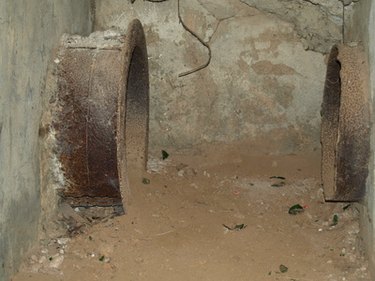Things You'll Need
Drill and masonry bit
Sledgehammer
Gravel
Rock
Sand
Clay soil
Topsoil

If you're purchasing an older home or building a new home on an old homestead site, inspect the yard for abandoned water cisterns. Grass and weeds camouflaging unstable cistern coverings can cause people and animals to fall into the tanks. Removing a cistern involves using a front-end loader or backhoe to pull it out. Then you still have a large hole in your backyard to fill. An easier alternative is filling in the cistern, according to special guidelines.
Step 1
Remove any water and debris from the cistern. Do not leave any material that degrades, such as pipe ends or other non-masonry material, such as wood. It is OK to leave rocks or concrete materials.
Video of the Day
Step 2
Break or drill holes into the cistern floor to prevent water from accumulating again.
Step 3
Plug or remove any pipes coming into the cistern. Use concrete to plug any drainpipe openings.
Step 4
Fill the cistern with coarse gravel or rock and sand to within 2 feet of the surface, recommends the Missouri Department of Natural Resources.
Step 5
Top off the rest of the cistern with clay soil. Pack the soil down. Apply enough soil to form a mound to allow for settling and water runoff. The Kansas State University Extension recommends applying at least 10 inches of topsoil over the surface.
Video of the Day